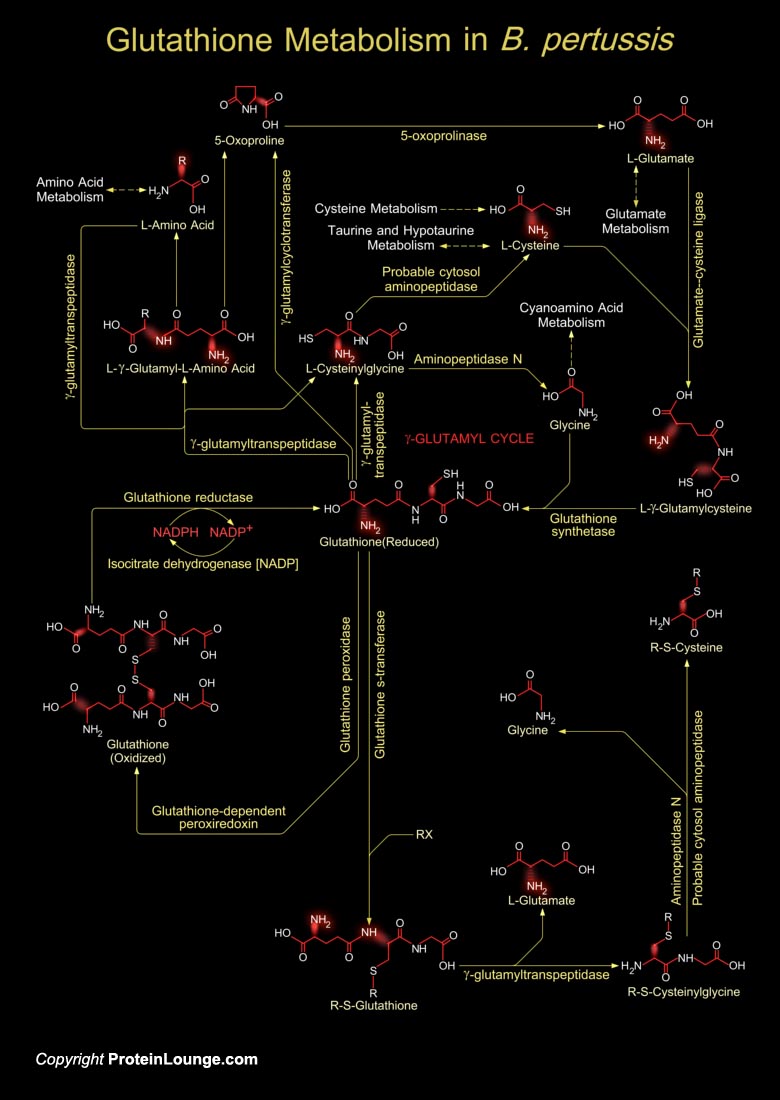
Bordetella is a Gram-negative Beta-proteobacteria that colonizes the respiratory tracts of mammals. It produces a complex array of adhesins, aggressins and toxins that are presumed to be important in the colonisation of its human host and in ensuring its survival and propagation. The organism also has highly sophisticated mechanisms for regulating virulence factor expression, in response to environmental signals or by reversible mutations. Bordetella pertussis, the etiologic agent of whooping cough, produces numerous toxins including Pertussis Toxin, Adenylate Cyclase Toxin, Dermonecrotic Toxin and Tracheal Cytotoxin (Ref.1, 2 & 3).Glutathione in Bordetella is a tripeptide, composed of Glutamate, Cysteine and Glycine, and has numerous important functions within the[..]
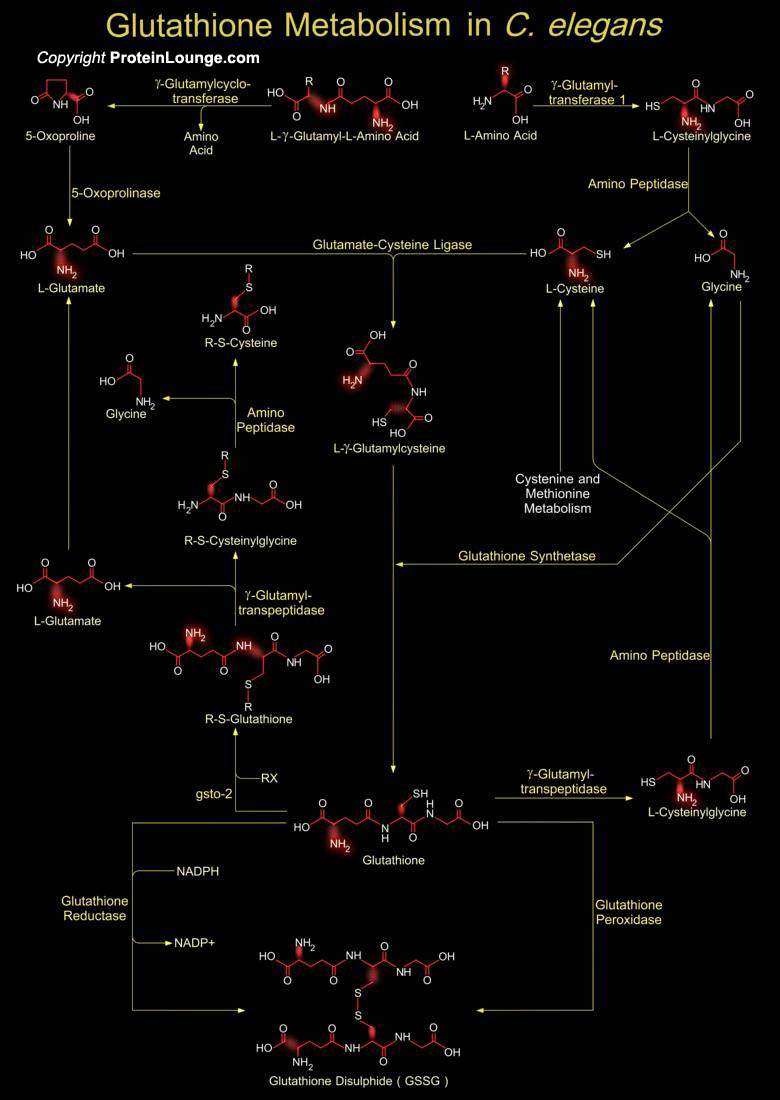
Glutathione is an intracellular low-molecular-mass thiol which serves as a major cellular line of defense against oxidative stimuli at several levels. Glutathione plays important roles in antioxidant defense, nutrient metabolism, and regulation of cellular. Glutathione deficiency contributes to oxidative stress leading to aging and the pathogenesis of many diseases (including kwashiorkor, seizure, Alzheimer's disease, Parkinson's disease, liver disease, cystic fibrosis, sickle cell anemia, HIV, AIDS, cancer, heart attack, stroke, and diabetes). Glutathione is predominantly found in its reduced state or as oxidation product GSSG (glutathione disulfide) formed from two molecules of glutathione linked by a disulfide bond by the action of NADPH-dependent[..]
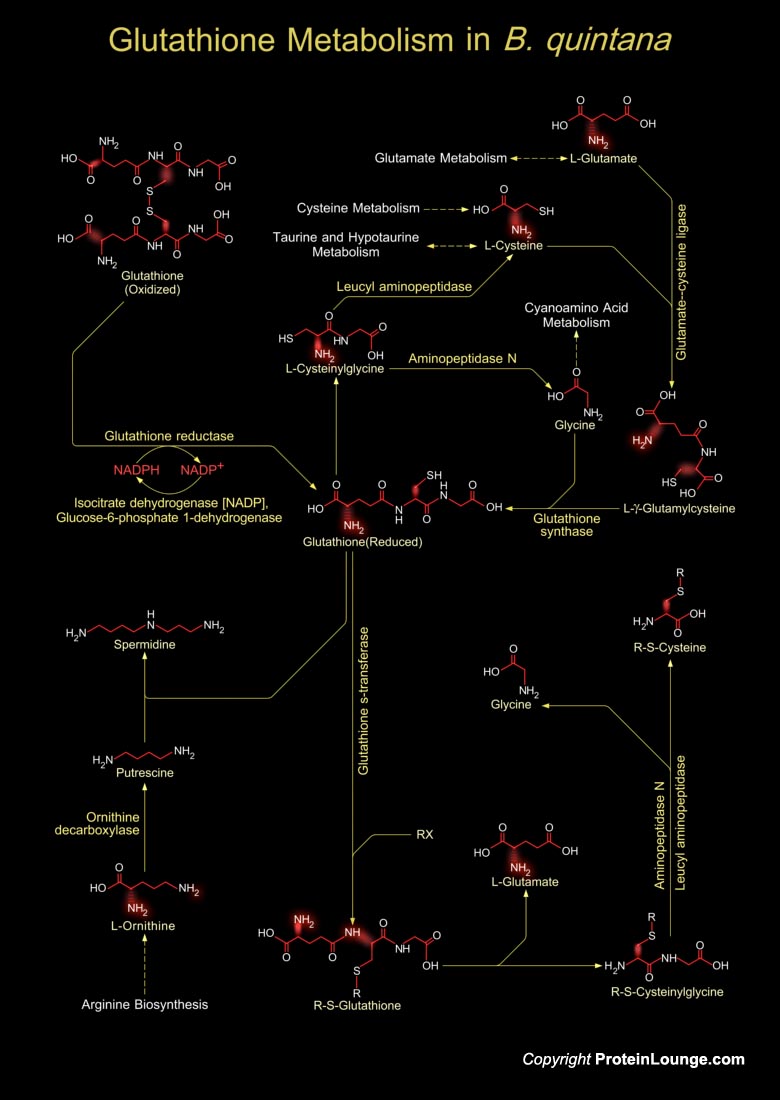
Bartonella quintana is a fastidious, Gram-negative bacteria pathogen and the etiologic agent of the trench fever. This disease was first identified in the trenches of World War I. The bacterium lives in the gut of the body louse and is transmitted in their faeces. It enters the human body through damaged skin or through the conjunctiva of the eye. Promiscuity and dirty conditions in the trenches enable the spread of the disease. B. quintana is also responsible for a disease called Bacillary Angiomatosis and for causing Endocarditis (Ref.1 & 2). Glutathione is a small molecule found in Bartonella cell. Glutathione metabolism in B. quintana involves both the synthesis of Glutathione and its catabolism. It cannot enter most cells directly and therefore must be made[..]
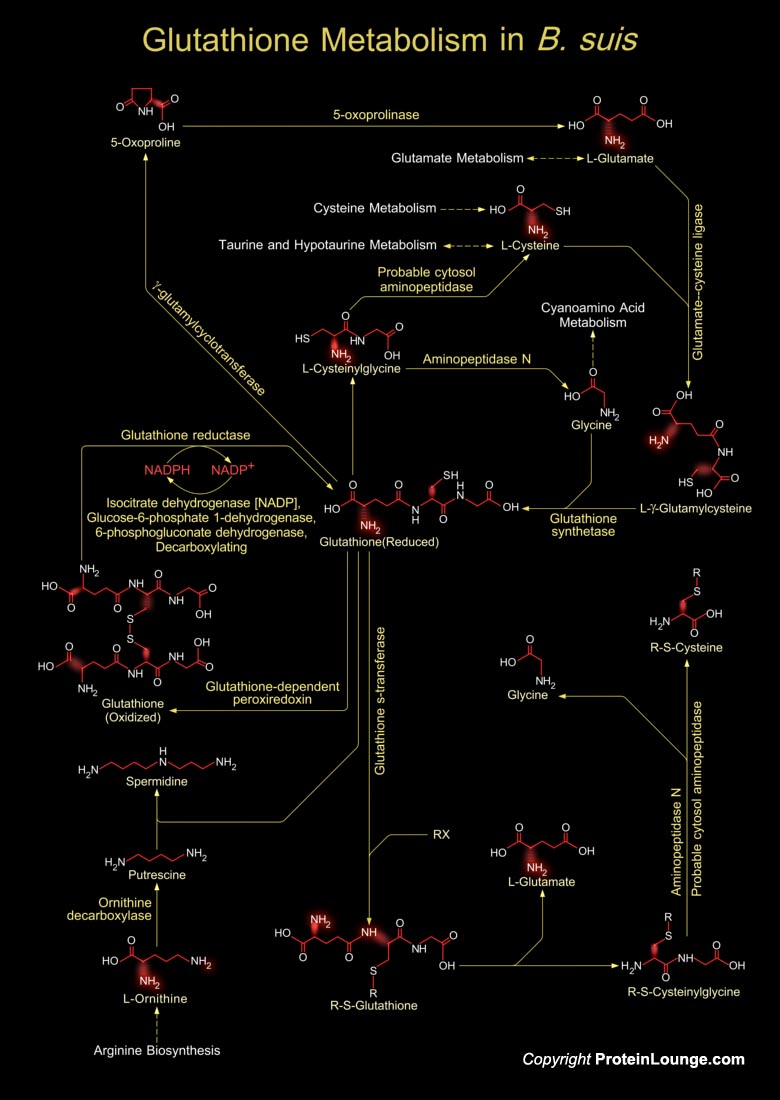
Bacteria of the genus Brucella are Gram-negative facultative intracellular pathogens of various wild and domestic mammals and are able to cause brucellosis, a severe zoonotic infection affecting ruminants, pigs, dogs, rodents, and cetacean. Traditionally, three major species are distinguished by their predilections for certain animal hosts: Brucella abortus for cattle, Brucella melitensis for caprines, and Brucella suis for hogs. Whereas B. abortus is the livestock pathogen with the greatest economic impact, B. melitensis and B. suis account for most clinical cases in humans (Ref.1 & 2). Human brucellosis, or Malta fever, is a serious debilitating disease that is rife in endemic areas including the Mediterranean basin and Latin America. The key aspect of Brucella[..]
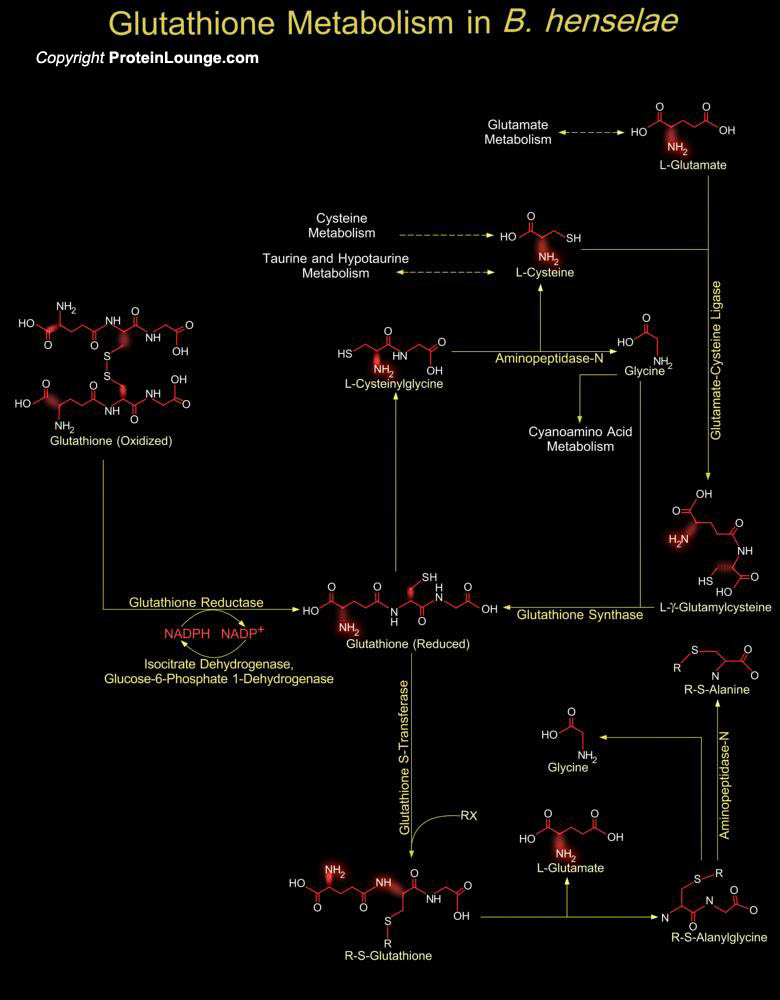
Bartonella henselae is a fastidious, Gram-negative bacterial pathogen of cats and humans. Bartonella sp. are transmitted by insect vectors, using mammalian reservoirs, infecting similar cell types (Endothelial cells and Erythrocytes) and causing vasculoproliferative changes in immunocompromised hosts. B. henselae causes CSD (Cat Scratch Disease). Most people with CSD have been bitten or scratched by a cat and developed a mild infection at the point of injury. Lymph nodes, especially those around the head, neck, and upper limbs, become swollen. Additionally, a person with CSD may experience fever, headache, fatigue, and a poor appetite. Rare complications of B. henselae infection are bacillary angiomatosis and Parinaud's oculolandular syndrome (Ref.1 & 2).[..]
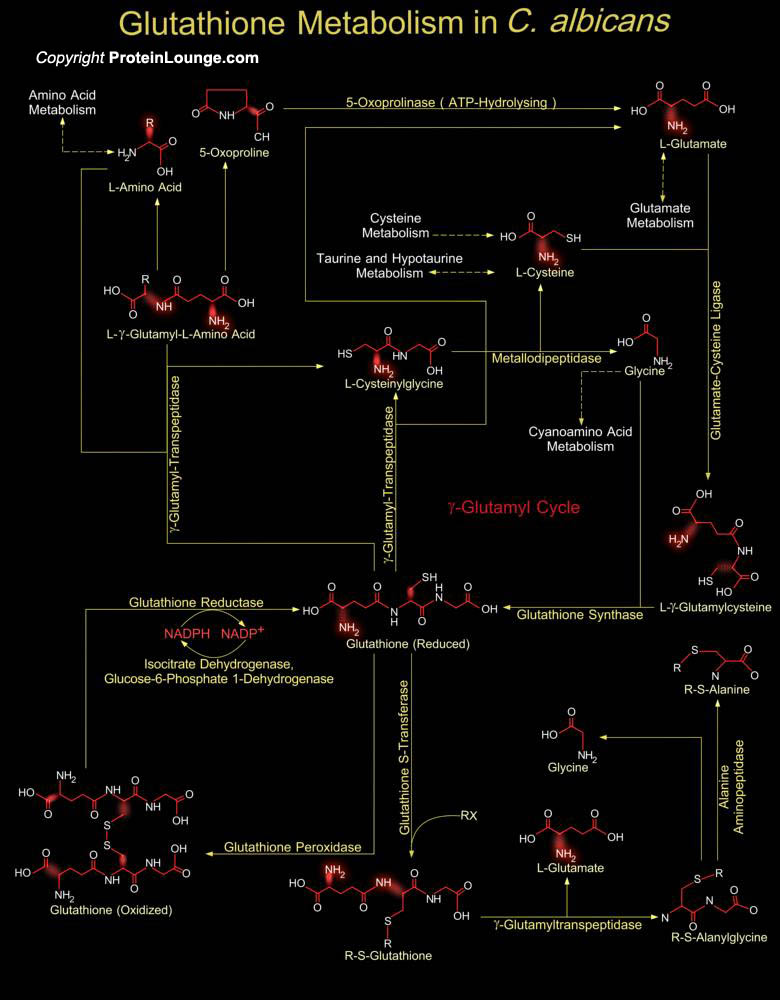
Glutathione is a sulfhydryl (-SH) antioxidant, antitoxin, and enzyme cofactor. It is ubiquitous in animals, plants, and microorganisms, and being water soluble is found mainly in the cell cytosol and other aqueous phases of the living system. It cannot enter most cells directly and therefore must be made available inside the cell from its three constituent amino acids: Glycine, Glutamate and Cysteine. The rate at which glutathione can be made depends on the availability of Cysteine, which is relatively scarce in foodstuffs. Furthermore, the Cysteine molecule has a sulfur-containing portion which gives the whole Glutathione molecule its ‘biochemical activity’. Cysteine can also enter the Glutathione metabolism through several other metabolic pathways like[..]
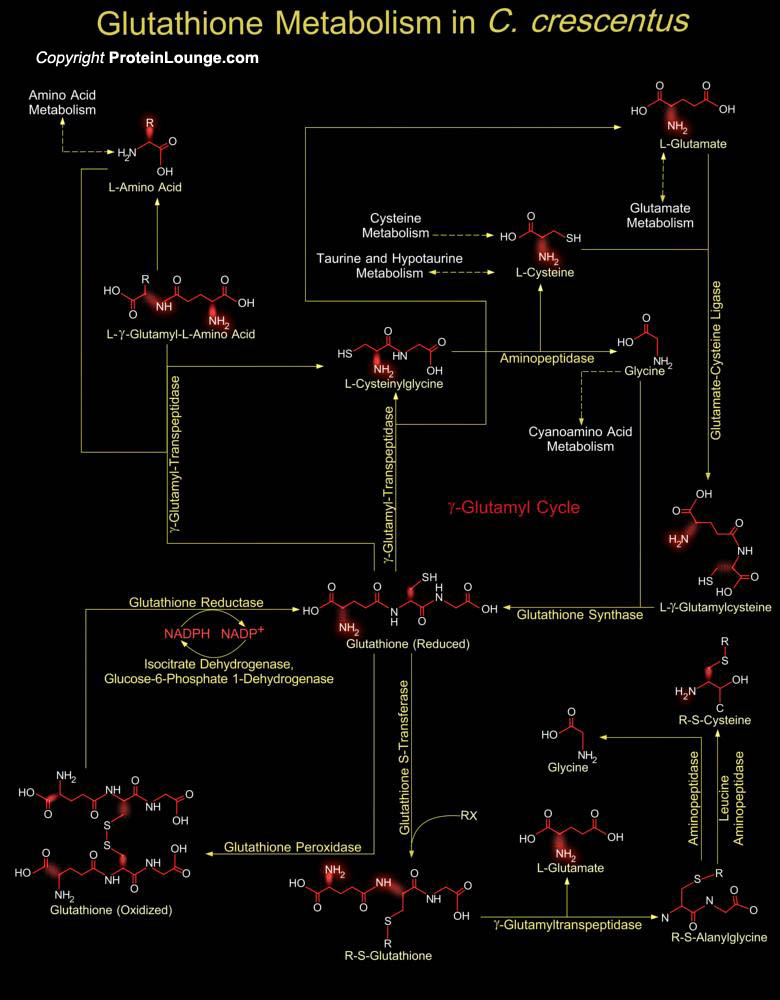
Caulobacter crescentus is a Gram-negative non-pathogenic bacterium that grows in dilute aquatic environments. It is a member of the Alpha-subdivision of Proteobacteria. C. crescentus invariably differentiates and divides asymmetrically at each cell cycle. C. crescentus is a simple and highly manipulable single-celled model system to study cellular differentiation, asymmetric division, and their coordination with cell cycle progression (Ref.1 & 2).Glutathione is a sulfhydryl (-SH) antioxidant, antitoxin, and enzyme cofactor and is ubiquitous in all organisms including microorganisms like C. crescentus. It is a tripeptide composed of Glutamate, Cysteine and Glycine, and has numerous important functions within cells. Being water soluble, it is found mainly in the cell[..]
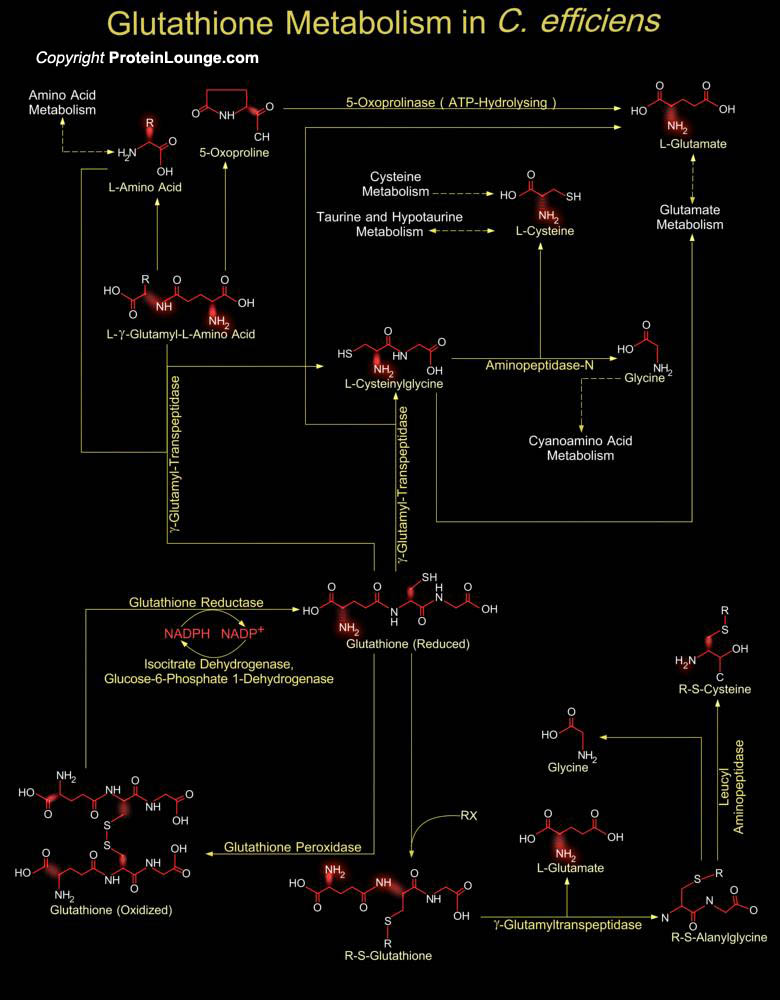
Corynebacterium efficiens is a small, generally nonmotile, Gram-positive, non-sporulating pleomorphic bacillus that enjoys widespread distribution. Corynebacteria are chemoorganotroph and aerobic, or facultatively anaerobic, exhibiting a fermentative metabolism (carbohydrates to lactic acid) under certain conditions. They are fastidious organisms, growing slowly on even an enriched medium. C. efficiens serve for the industrial production of L-Amino acids, in particular L-Glutamic acid (a million tons each year), for a long time. C. efficiens can grow at temperatures above 40 degrees Celsius and this feature is quite beneficial for its industrial use, because fermenters to be used for its cultivation need to be cooled down only to a lesser extent for heat removal[..]
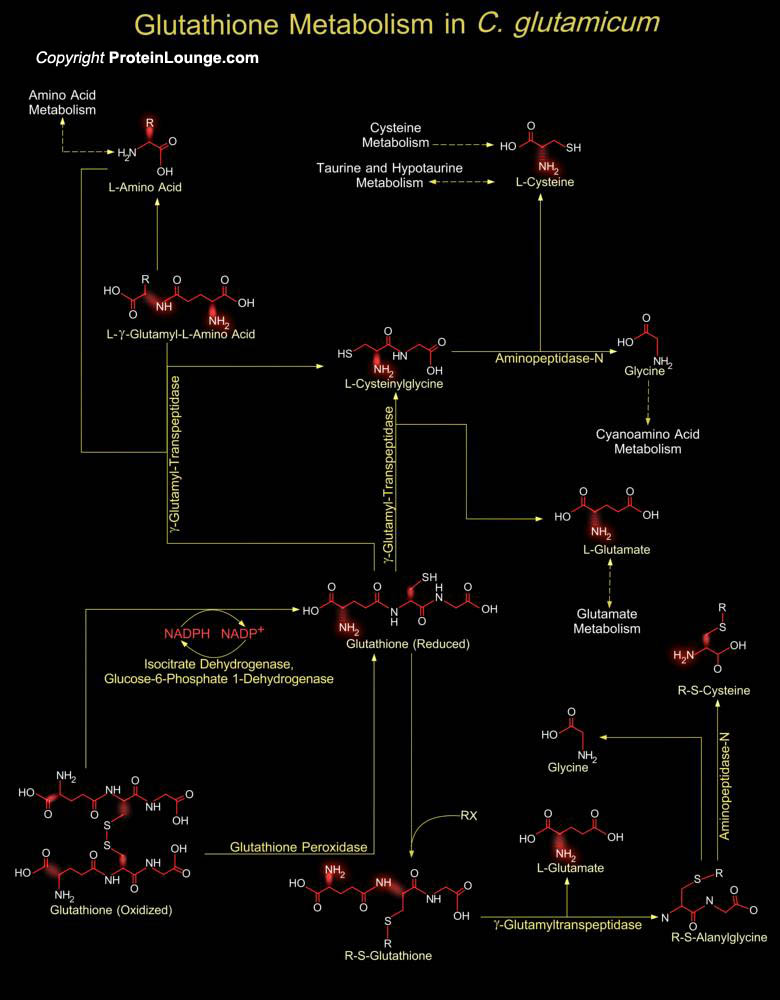
Corynebacterium glutamicum is a Gram-positive, non pathogenic and fast growing soil bacterium with special biotechnological importance C. glutamicum is an amino acid producing soil bacterium. A typical feature of this organism is the formation of V-shaped structures of dividing cells, called "snapping division". C. glutamicum is used for industrial amino acid production and hence grown in bioreactors under control of the process parameters (Ref. 1). Glutathione is a thiol compound, present in the highest concentration in all types of cells. It is composed of Glutamate, Cysteine and Glycine, and has numerous important functions within the C. glutamicum cell. Glutathione metabolism in C. glutamicum occurs within cells in two closely linked, enzymatically[..]
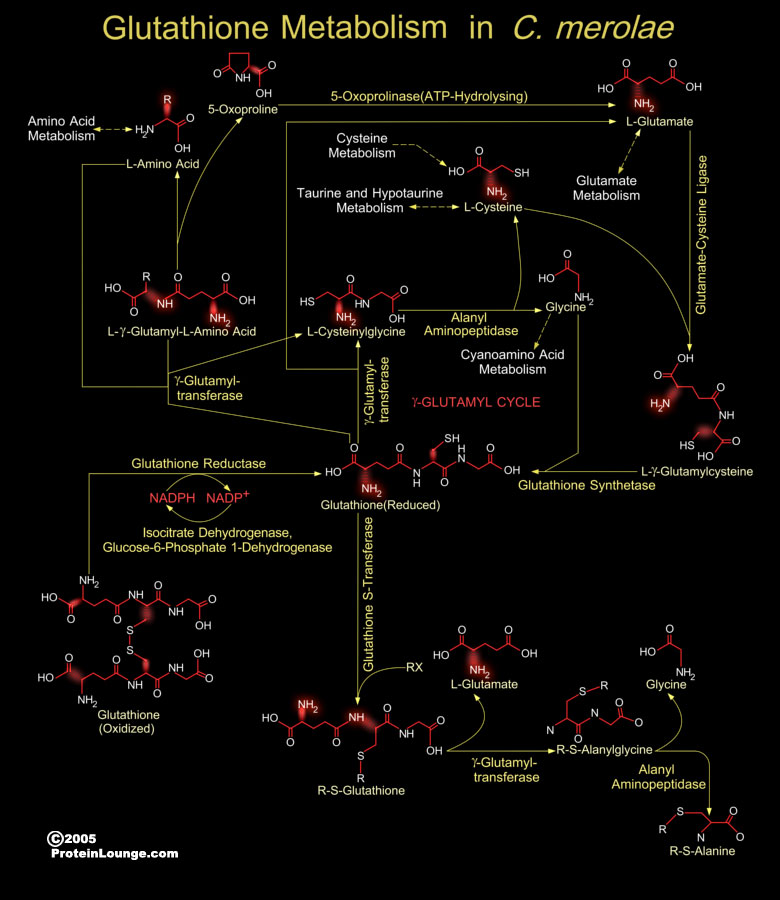
Glutathione is a sulfhydryl (-SH) antioxidant, antitoxin, and enzyme cofactor. It is found in the vast majority of prokaryotic and eukaryotic cells, where it often represents the major pool of non-protein reduced sulphur. It cannot enter most cells directly and therefore must be made available inside the cell from its three constituent amino acids: Glycine, Glutamate and Cysteine. The rate at which Glutathione can be made depends on the availability of Cysteine, which is relatively scarce in foodstuffs. Furthermore, the Cysteine molecule has a sulfur-containing portion which gives the whole Glutathione molecule its ‘biochemical activity’. Cysteine can also enter the Glutathione metabolism through several other metabolic pathways like Cysteine, Taurine and[..]
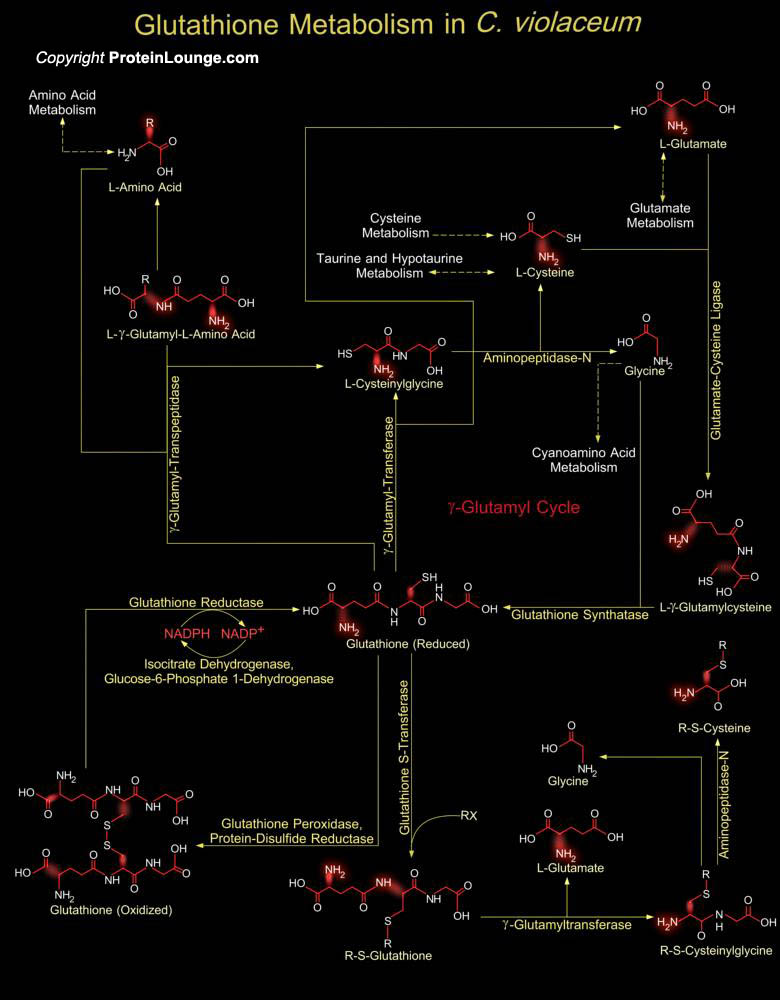
Chromobacterium violaceum is a Gram-negative bacterium and one of millions of species of free-living microorganisms that populate the soil and water in the extant areas of tropical biodiversity around the world (Ref.1). This bacterium has a versatile energy-generating metabolism and is capable of exploiting a wide range of energy resources by using appropriate oxidases and reductases. This allows C. violaceum to live in both aerobic and anaerobic conditions. Glutathione metabolism in C. violaceum occurs within cells in two closely linked, enzymatically controlled reactions that utilize ATP and draw on nonessential amino acids as substrates. Glutathione is a tripeptide, composed of glutamate, cysteine and glycine, and has numerous important functions within the[..]
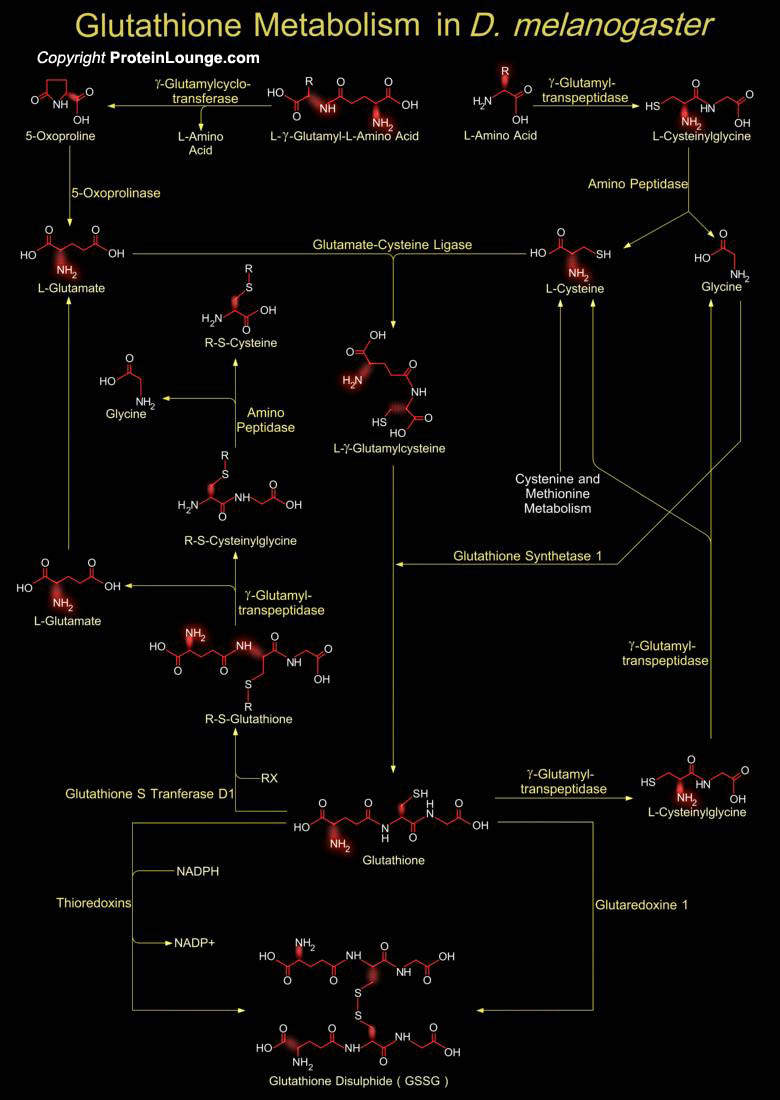
Glutathione(Gsh) is a sulfhydryl (-SH) antioxidant, antitoxin, and enzyme cofactor. It is ubiquitous in animals, plants, and microorganisms, and being water soluble is found mainly in the cell cytosol and other aqueous phases of the living system. Glutathione is a tripeptide composed of Glutamate, Cysteine and Glycine that has numerous important functions within cells. Glutathione is homeostatically controlled, both inside the cell and outside. It often attains millimolar levels inside cells, which makes it one of the most highly concentrated intracellular antioxidants. Glutathione exists in two forms. The antioxidant "reduced Glutathione" tripeptide is conventionally called Glutathione and abbreviated Gsh; the oxidized form is a sulfur-sulfur linked[..]

